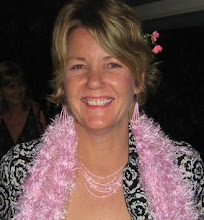 Web-based Animations and Simulations, such as Gismos, are content focused and encourage inquiry based instruction and exploration. Animations and Simulations use complex interactions and abstract concepts to actively engage students in learning while offering a virtual experience when the real thing may be difficult to provide (Explorelearning, 2009).
Web-based Animations and Simulations, such as Gismos, are content focused and encourage inquiry based instruction and exploration. Animations and Simulations use complex interactions and abstract concepts to actively engage students in learning while offering a virtual experience when the real thing may be difficult to provide (Explorelearning, 2009).When it comes to using animals for scientific purposes in our classrooms, for example dissecting a frog, approval from the Queensland Schools Animal Ethics Committee is a legal requirement (Department of Education and Training (DET), 2007). Because of this legal requirement, the Queensland Schools Animal Ethics Committee considers, as one of their 3Rs of animal welfare, is to replace animals with other alternatives (DET, 2007). In the case of dissecting a frog, (could you do it?)the alternative could be to use the Web-based virtual dissection of a frog Frogguts.
Google Earth

I love playing on Google Earth. Typed in my address and had a look at my house, still no pool. NASA seems to be taking a long time to update the images from this part of the world.
Google Earth lets you explore the wonders of planet Earth through the use of satellite imagery, maps, terrain, 3D buildings and much more. As far as our students go, Google Earth can help us bring a world of information alive. The Google Earth demos can be used as the hook that gets our students excited about everything from geography to maths.
I have used Google Earth twice in my learning experiences plans. In my first year at University my Year 5 class were looking at the history of the Olympic Games. Students were keen to see what the “Bird’s Nest” (China’s Olympic Stadium) looked like, so off we flew to China. Before we arrived in China we discovered and documented other Olympic sites along the way. This year I have used Google Earth to view the tectonic plate-shifts and areas of volcanic activity for my mini unit on volcanoes. The students were able to view the seven major tectonic plates and analyse data to see for themselves the earthquake and volcanic activity which happens each day. They were able to view, flat or in 3D, all of this with just a few clicks of the mouse. The only limit to Google Earth's use in the classroom is your imagination.
Dr Robert Mazano identified nine instructional strategies that are most likely to improve student achievement across all content areas and across all grade levels. These strategies are explained in his book, Classroom Instruction That Works (2001). In his book, he has stated that student achievement improves when simulations are used by teachers as a form of instruction. Animations and Simulations are designed to supplement and support curriculum materials and standards, while also helping teachers to bring research-proven instructional strategies to their classrooms (Marzano, Pickering & Pollock, 2001).
References:
Department of Education and Training. (2007). What is the queensland schools animal ethics committee? Retrieved 17th August, 2009, from http://education.qld.gov.au/curriculum/area/science/qsaec.html
Explorelearning, (2009). Experience maths and science with gismos. Retrieved 17th August, 2009 from http://www.explorelearning.com/index.cfm
Image.Retrieved 17th August, 2009, from http://www.freedigitalphotos.net/
Marzano, R., Pickering, D. & Pollock, J. (2001). Classroom instruction that works. Retrieved 17th August, 2009 from http://www.marzanoresearch.com/site/

Hi Rhonda, you have just alerted me to another aspect of Google Earth that I was not aware of. Isn't it wonderful how reading through other peoples insights into these technology tools, provides us with new perspectives on the numerous ways to implement them in our learning design. Thanks for providing me with a new resource. Marg
ReplyDelete